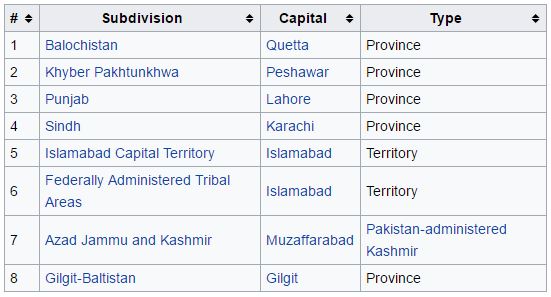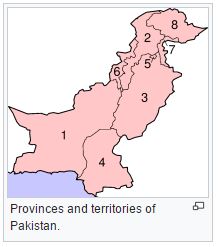Click here for CPEC Part I and here for Part II
What is the issue?
- The CPEC is a 15-year project between Pakistan and China, which aims to connect the ancient Chinese trading town Kashgar with Pakistan’s deep-sea Gwadar port via PoK through a network of highways, railways and oil and gas pipelines and fibre optic cables.
- Gwadar is the crown jewel of CPEC and Balochistan is the home to Gwadar port.
- Yet Balochistan stands to gain little from the massive project, despite being in desperate need of economic opportunity.
- The province’s share in the CPEC is a mere 0.5%.
What are the administrative units of Pakistan?
The administrative units of Pakistan consist of four provinces, one federal capital territory, two autonomous and disputed territories, and a group of federally administered tribal areas.


Who are Baloch people?
- Baloch people are an ethno-linguistic group mainly found in Pakistan, Iran and Afghanistan.
- Balochistan region covers Balochistan Province in southwestern Pakistan, Sistan and Baluchestan Province in southeastern Iran, and the Balochistan region of southern Afghanistan.
- Baloch nationalism is a movement that claims the Baloch people in the region form a distinct nation.
- The movement propagates the view that Muslims are not a nation and that ethnic loyalty must surpass religious loyalty
- The Insurgency in Balochistan is a guerrilla war waged by Baloch nationalists against the governments of Pakistan and Iran in the region.
What is the reason for insurgency?
- 70% of people in Balochistan live in poverty.
- The maternal death rate in Pakistan is 278 per 100,000, whereas in Balochistan it stands at 785.
- Natural gas was discovered at Sui in Balochistan, yet major parts of the province are still deprived of natural gas.
- It’s important to understand that the violence in Balochistan is not just because of terrorism.
- The insurgents are mostly local people longing for their constitutional rights and welfare.
- Therefore most of the insurgent movements in Balochistan have been linked with deprivation and underdevelopment.
- The division of CPEC benefits repeats the same mistake, where the people of Balochistan are not allowed to benefit from the province’s own advantages.
What is the problem in Pakistan’s approach?
- Pakistan’s government has generally regarded Brahamdagh Bugti, the alleged leader-in-exile of the Baloch Republican Army, as the sole representative of the Baloch conflict, particularly pointing to Bugti’s India-centric policy.
- Also Indian Prime Minister Narendra Modi made remarks on Balochistan last year.
- Therefore the Pakistani government and military officials tend to blame the violence in Balochistan on Indian meddling in the province.
- But to truly solve the problems in Balochistan, Pakistan’s focus must be inward.
What should be done?
- The state needs to differentiate sub-nationalists from the terrorist outfits operating from within Balochistan.
- Terrorist organisations need to be dealt with accordingly as per the national counterterrorism strategies.
- But the Sub-national groups should be encouraged to come into the national fold by addressing legitimate concerns.
- If the violence still gets out of hand, then counter-insurgency (COIN) strategies can be employed.
- The guilty should be subject to normal court proceedings.
- Media coverage in the region should be increased rather than the current situation of reporters going missing from Balochistan.
- Pakistani authorities must ensure that CPEC doesn’t repeat the earlier injustice meted out to the native Balochs. Balochistan must get its fair share of the economic corridor.
Source: Diplomat